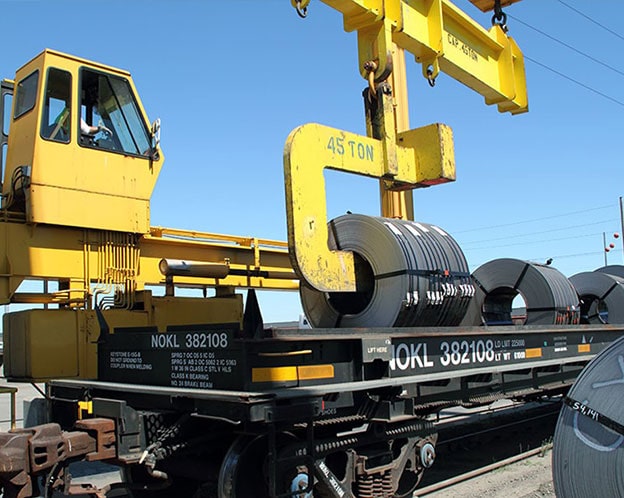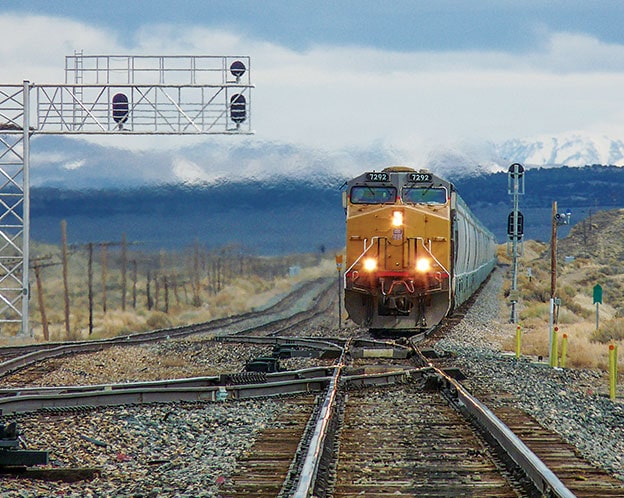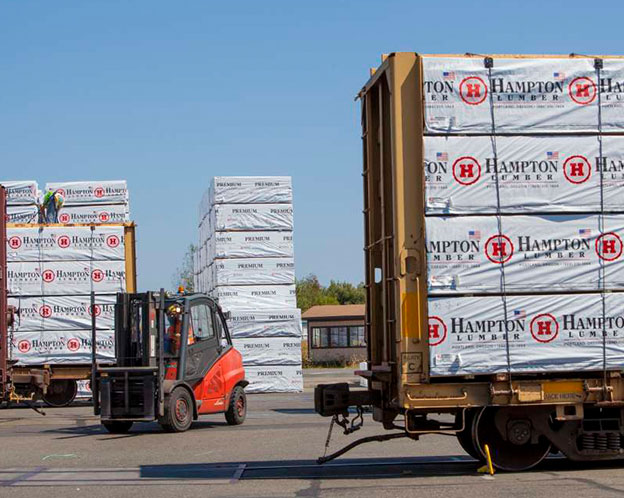What Is Transloading?
Learn how to get the best of truck and train.
When products are transloaded, they’re moved from trucks to rail cars, or vice versa. Often, shippers want to combine the economic advantages of shipping by rail with the flexibility of over-the-road trucking, using affordable rail shipping for the long haul and trucks for final delivery. Transloading allows this to be possible.
Why Transload?
Transloading gives you the best of both worlds, combining economical rail transport with the flexibility of over-the-road trucking. As shipments move seamlessly between modes, you get the economies of rail without the investment in track, allowing you to ship affordably throughout North America and expand your market reach.
Most shippers turn to transloading to lower transportation costs and access the benefits of rail. Typically, shipping by rail is a more affordable shipping option. However, many shippers — or receivers — don’t have tracks at their door. With transloading, it doesn’t matter: all shippers and receivers can benefit from rail.
A single rail car can carry the contents of three to four truckloads — and trains are four times more fuel efficient than trucks. These efficiencies are passed to your transportation costs, allowing you to ship heavier loads farther, all while spending less.

What Products Can Be Transloaded?
Just about any product can be transloaded between trains and trucks and back again. Some typical examples include:
- Standard Rail Commodities: Lumber, metals, paper, rebar bundles, palletized products
- Bulk: Sand, plastic pellets, soda ash, flour
- Liquids: Ethanol, biodiesel, diesel exhaust fluid (DEF)
- Oversized: Transformers, wind blades, machinery, military vehicles
- Service Sensitive/Critical: Auto parts, parcel, frozen food, produce, other perishables
- And more: Bricks, floor tile, coil, solar panels and beyond
How Does Transloading Work?
The way a product is transloaded depends on the product type. Products can be transloaded by:
-

Forklift
For products like lumber, paper and palletized goods
-

CONVEYOR
For bulk products like sand, soda ash, grains, flour and sugar
-

PUMP/PNEUMATIC TRANSFER
For products like plastic pellets and liquids
-

CRANE
For large, heavy products like steel beams, rebar, pipe and wind components
-

FRONT-END LOADER
For products like rock, salt and other minerals and aggregates
Depending on whether the origin or destination has rail service, transloading can happen a few different ways.
Origin Transload (no tracks at origin):
For an origin transload, trucks pick up products, which are then transloaded to rail and delivered to the final destination.
-

Customer:
Non-Rail Served -

Origin
Trucking -
Loup Transload
-

Rail Transit
-

Receiver:
Rail Served
Swipe to see more
Destination Transload (no tracks at destination):
With a destination transload, the origin is rail served, so products are picked up by train, then transloaded to trucks for delivery to the non-rail-served final destination.
-

Customer:
Rail Served -

Rail Transit
-
Loup Transload
-

Destination
Trucking -

Receiver:
Non-Rail Served
Swipe to see more
Door-to-Door Transload (no tracks at either end):
If neither the origin nor the destination is rail served, rail can still be used for the long haul. In a door-to-door transload, trucks pick up products, they are transloaded to trains for the majority of the trip, then they are transloaded back to trucks for final delivery.
-

Customer:
Non-Rail Served -

Origin
Trucking -
Loup Transload
-

Rail
Transit -
Loup Transload
-

Destination
Trucking -

Receiver:
Non-Rail Served
Swipe to see more
Want to get the best of truck and train?
Learn more about how transloading can work for you.
Connect with us
Rail Shipping Benefits Include:
- Market Reach: The rail network stretches across the U.S., Canada, and Mexico, so you can ship to distant markets more affordably.
- Scalability: Capacity is rarely an issue for railroads, so rail can accommodate even your largest loads — and will be ready for more when your business grows.
- Reliability: Rail is a 24/7 operation, pushing forward when trucks can’t.
- Cost Savings: Simply put, rail is a more affordable transportation solution than truck.

Transloading Supports Storage, Too
If your products need to be stored for a period of time before final delivery, they can be transloaded for ground storage, then transloaded back to trains or trucks when they’re ready for final delivery.
This is especially helpful for companies who require on-demand shipping. Products can be shipped by an affordable rail solution, transloaded, stored, then delivered by truck to meet the needs of your markets.

